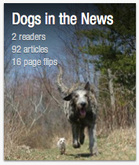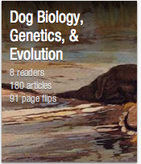Although the technical abilities of molecular genetics that allow scientists to identify the genes underlying the inherited diseases of dogs continue to improve at an astonishing rate, the educational resources for breeders have not kept up. Given the ability to test for the recessive autosomal gene causing a particular disease, over and over again breeders have diligently tested and completely purged the population of not just affected animals but also carriers, doing irreversible damage to the gene pool of the breed. When there are multiple genes to consider, breeders are left to their own devices to make breeding decisions, which might be appropriate for an individual breeder but damaging for the breed.
Mellersh, in "DNA Testing and Domestic Dogs", gives a thoughtful review of these growing problems for breeders and argues that scientists have a responsibility to make the information they produce more accessible to breeders, and also to place risks and benefits in an appropriate context for a lay audience that might have the best of intentions to do the right thing but lacks the expertise to make those judgements themselves.
Mellersh C 2012 DNA testing and domestic dogs. Mammalian Genome 23: 109-123. (pdf)
Mellersh, in "DNA Testing and Domestic Dogs", gives a thoughtful review of these growing problems for breeders and argues that scientists have a responsibility to make the information they produce more accessible to breeders, and also to place risks and benefits in an appropriate context for a lay audience that might have the best of intentions to do the right thing but lacks the expertise to make those judgements themselves.
Mellersh C 2012 DNA testing and domestic dogs. Mammalian Genome 23: 109-123. (pdf)
 RSS Feed
RSS Feed





